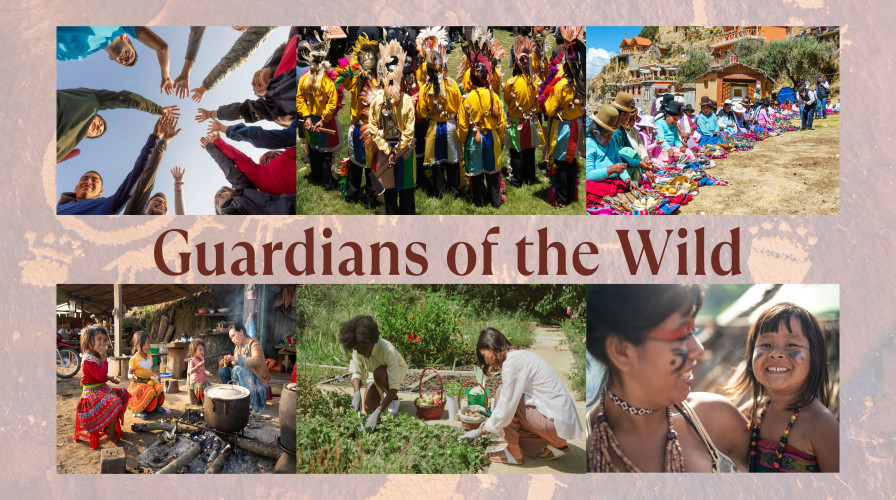Guardians of the Wild: Indigenous Communities Leading the Charge in Wildlife Conservation
In the heart of some of the world's most biodiverse regions, indigenous communities are emerging as key players in wildlife conservation. These communities, with their deep-rooted knowledge and cultural ties to the land, are proving to be indispensable allies in the global effort to protect endangered species and preserve ecosystems. Here’s how indigenous communities are making a significant impact on wildlife conservation and why their role is more crucial than ever.
A Deep Connection with Nature
Indigenous communities have lived in harmony with nature for centuries, developing a profound understanding of their local environments. Their traditional knowledge systems encompass a wealth of information about species behaviour, ecological relationships, and sustainable resource management practices. This intrinsic connection to nature forms the backbone of many successful conservation efforts.
Effective Stewardship of Land and Resources
Indigenous peoples manage or have tenure rights over a quarter of the world's land surface, which is home to 80% of the planet's biodiversity. Their land stewardship practices, honed over generations, often result in more sustainable and ecologically sound management compared to conventional methods. By preserving forests, wetlands, and other critical habitats, they play a vital role in maintaining biodiversity.
Community-Led Conservation Initiatives
Several indigenous-led conservation initiatives have garnered international recognition for their effectiveness. For instance, the Yurok Tribe in California has successfully reintroduced the California Condor to its ancestral lands. In Australia, Aboriginal ranger programs have been instrumental in protecting endangered species and managing invasive species through traditional land management techniques.
Challenges and Threats
Despite their contributions, indigenous communities face numerous challenges. Land grabbing, deforestation, and extractive industries often threaten their territories and livelihoods. Moreover, legal recognition of their land rights is still lacking in many regions, making it difficult for them to enforce conservation measures. Climate change poses an additional threat, impacting the ecosystems they depend on and have traditionally conserved.
Collaboration with Conservation Organizations
Partnerships between indigenous communities and conservation organizations are crucial for scaling up conservation efforts. Such collaborations often lead to the creation of community conservancies, which blend traditional knowledge with scientific research to protect wildlife. The Maasai Mara Conservancies in Kenya are a prime example, where local Maasai communities work alongside conservationists to protect critical wildlife corridors.
The Way Forward
To bolster the role of indigenous communities in wildlife conservation, several steps are essential:
Legal Recognition and Support: Governments must recognize and protect the land rights of indigenous peoples, ensuring they have the legal backing to manage their territories.
Funding and Resources: Providing financial support and resources for community-led conservation projects can empower indigenous groups to expand their efforts.
Capacity Building: Training and capacity-building programs can help indigenous communities enhance their conservation practices and adapt to emerging challenges.
Inclusive Policies: Developing policies that include indigenous voices in decision-making processes ensures that conservation strategies are culturally appropriate and effective.
Success Stories: Indigenous Conservation in Action
1. The Amazon Rainforest Guardians
In the Amazon, indigenous tribes like the Kayapo have formed alliances to protect large swathes of rainforest from deforestation and illegal mining. Their efforts have been crucial in preserving one of the world's most vital carbon sinks and biodiversity hotspots.
2. The Bornean Rainforest Keepers
In Borneo, the Dayak communities have implemented sustainable forest management practices that protect orangutans and other endangered species. Their community-led conservation areas have become models of sustainable living and wildlife protection.
3. The Arctic Circle Protectors
Indigenous groups in the Arctic, such as the Inuit, are at the forefront of efforts to monitor and mitigate the impacts of climate change on polar bear populations and other Arctic wildlife. Their traditional ecological knowledge is invaluable for scientific research and conservation strategies.
Conclusion
Indigenous communities are the unsung heroes of wildlife conservation, their deep-seated connection to the land and traditional ecological knowledge making them indispensable allies in the fight to preserve our planet's biodiversity. As the world grapples with environmental challenges, supporting and empowering these communities is not just a moral imperative but a practical necessity. By recognizing their rights and fostering collaborative conservation efforts, we can ensure a more sustainable and biodiverse future for all.
As the guardians of some of the world’s most pristine and ecologically significant regions, indigenous communities hold the key to successful and sustainable wildlife conservation. Their role is not just beneficial but essential, making them true stewards of the planet's natural heritage.









